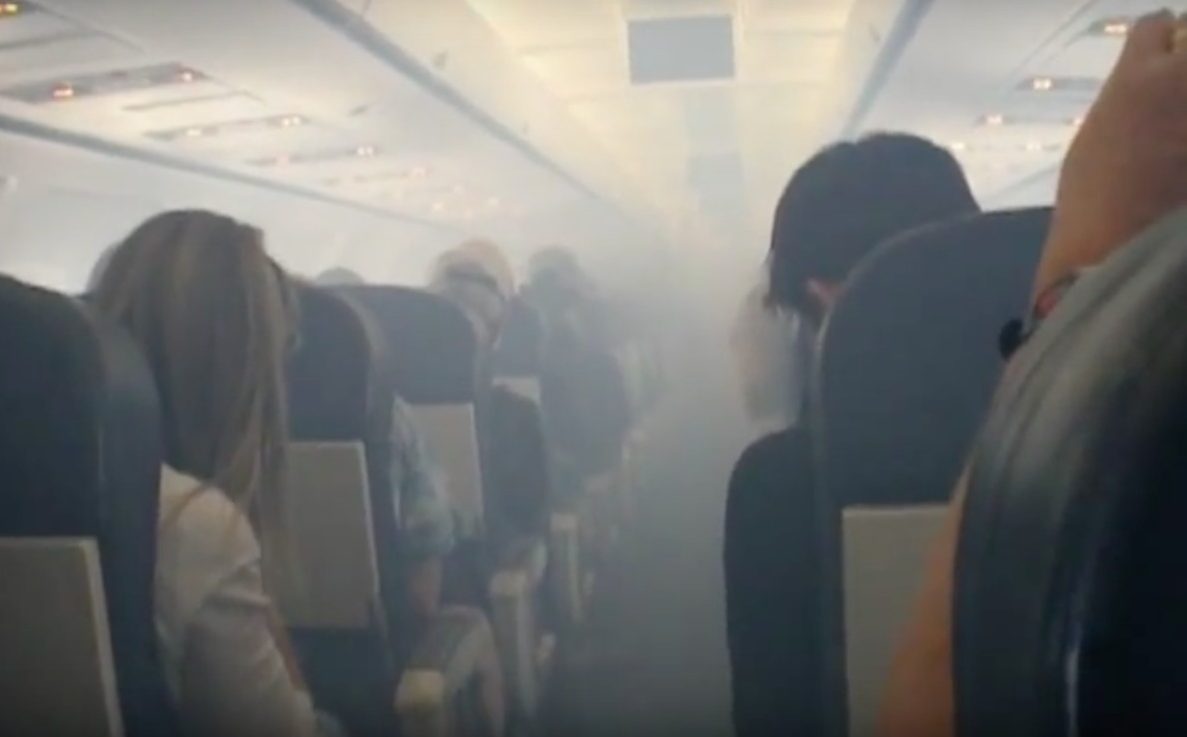
On Monday, an American Airlines flight from Madrid to New York JFK was forced to declare a midair emergency and divert to Shannon Airport in Ireland after passengers and crew started to smell an “odour” inside the cabin. The situation was deemed to be so serious that flight attendants onboard the flight donned protective oxygen masks as the plane quickly descended.
According to reports, several passengers felt unwell and six of those onboard needed to be seen by medical personnel. The Irish Times reported a fleet of ambulances waiting to meet the flight after the emergency was declared. The plane, a 25-year old Boeing 767 was grounded at the airport for 24-hours as engineers carried out checks, with passengers being forced to spend the night in local hotels.
The incident sounds serious but it’s not uncommon. The Aviation Herald, which reported this incident and many other aviation-related accidents and occurrences has been keeping track of so-called “fume” events. Around 10 such incidents have already been recorded in August alone.
That includes another American Airlines flight – this time, a scheduled service from Shannon to Philadephia which was forced to divert to Halifax, Canada after the smell of smoke was reported in the cabin. Similar incidents have affected Lufthansa, Virgin Atlantic and Alaska – in each incident, the aircraft was forced to divert.
Yet, so little is known about what is actually causing these “fume” or “odour” events – in most of these incidents, engineers will carry out checks but rarely find the cause of the fault. What is clear, however, is that these events can make passengers and crew feel very unwell.
Many airlines claim odour events (the name they prefer to use) don’t cause any longterm damage although admit that some people might experience short-term nausea and headaches.
Other experts in the industry, call these events “toxic fume incidents” – they claim exposure to these fumes can cause long-term health problems and that anyone who has experienced such an incident should seek proper medical attention at the earliest opportunity.
A union group which represents flight attendants the Air France group of companies say they have recorded around 50 incidents this year already – which looks like it may break last year’s occurrence rate of 60 incidents. Like many cabin crew unions, they urge their members to immediately use protective smoke hoods if they smell an unusual odour onboard.
For passengers, the advice is to stay low and use cotton material to cover your eyes, nose and mouth. Both crew and passengers should see their physician at the earliest opportunity and request blood tests.
The concern is that these fumes or odours can lead to “aerotoxic syndrome” – a medical condition which isn’t fully understood but is believed to be caused by dangerous pollutants which can find a way into the cabin air system.
Some airlines have decided to fit special filters which are designed to stop these odours getting into an aircraft cabin – while maintaining that the fumes don’t cause longlasting ill effects. Whatever the case, should it happen to you, use the tools you have available to protect yourself.
Main photo for illustrative purposes only.
Mateusz Maszczynski honed his skills as an international flight attendant at the most prominent airline in the Middle East and has been flying ever since... most recently for a well known European airline. Matt is passionate about the aviation industry and has become an expert in passenger experience and human-centric stories. Always keeping an ear close to the ground, Matt's industry insights, analysis and news coverage is frequently relied upon by some of the biggest names in journalism.







